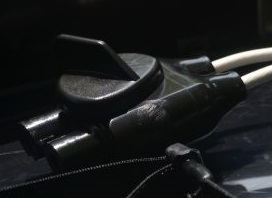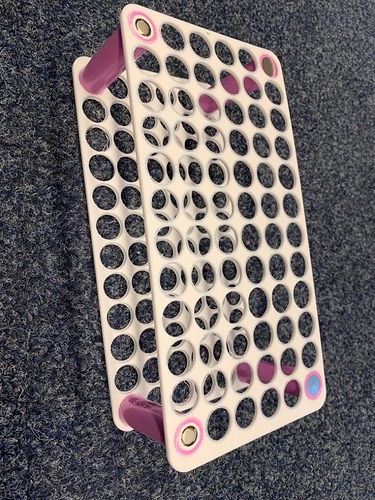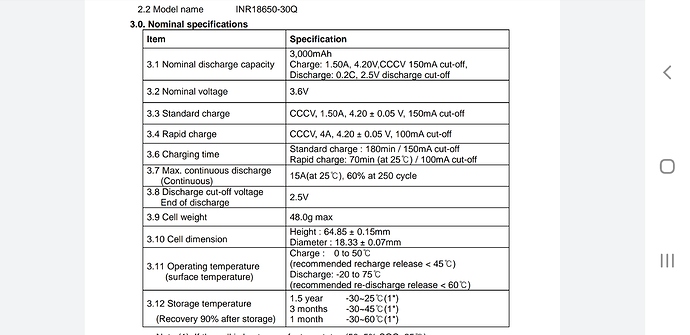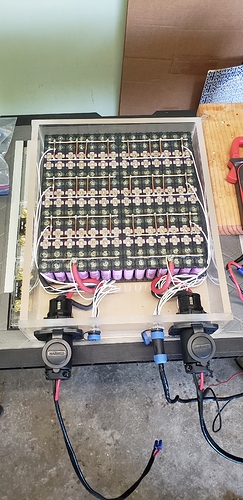Where can be found an alternate pattern cell holder to 3d print? I remember to have seen photo of it on this forum, am I wrong? …just to avoid having to cad such a boring thing!
That’s why I did the test. No voltage drop at 15amps with 1/2" 30awg. Fuse wire doesn’t start getting warm till over 15 amps. It’s funny how everyone just wants to do what they see everyone else doing. That’s why I created this thread. I want to document the process of building a pack using individual cell fusing. Stay tuned to see outcome.
The Samsung 30Q cells get up to 137°F (58°C) during a continuous 10amp discharge (See test above).
During a short circuit they get to over 300°F (150°C). In a pack with hundreds of cells, the combined thermal runaway, even if the cells themselves don’t catch fire they will get hot enough to spontaneously combust fiberglass, plastic, foam, and things like that.
By fusing the individual cells at a value below the current required to cause thermal runaway will result in that individual cell fuse melting. The pack will continue to operate normally at it’s rated voltage and you will notice the failure during charging because that cell group will require more balance charge protection.
There is a reason Tesla builds their batteries this way.
Will it work for e-foil? Stay tuned!
Not sure what you are looking for. Something like this?
Thank you! Yes, something like those but that can hold each row let’s say at 45deg than the other, like when you glue the cells, I need to reduce the width as much as possible.
On Aliexpress, you have different types of oblique battery holders
https://www.aliexpress.com/item/32967174904.html
along with varying sizes of oblique or “W” pure nickel strips
Here 23.5 x 18.3mm (no plastic bracket), they exist in larger pitch to take into account the bracket dimensions
https://www.aliexpress.com/item/32966878183.html
Does soldering 18650 cells damage them?
I have done some testing with a thermal camera and come to the conclusion that the maximum temperature the cell is exposed to during soldering (with the correct technique) is within the batteries rated operating temperature.
See attached picture and video. Maximum rated discharge temperature for Samsung 30Q cell is 167°F (75°C). And the peak temperature during soldering is only for a few seconds.
Soldering cells does not expose the cell the temperature above this value.
Tested fuse wire.
1/2" length of 30awg on both battery terminals.
Fuse wire does not exceed the temperature of the battery cell at 10amp discharge rate.
The fuse wire voltage drop remains below 3%.
Thats quick! Looks good, thanks for sharing.
I do believe soldering is an option if you know whats you are doing. Check HBpowerwall, in the past he soldered 1000’s of cell this way, still in good operation.
Thx. I’ll let you know how it works. I did all the testing. The math says it should work good. Only one way to find out for sure! 
A very nice job but too fast to attract the most sceptical among us. I am convinced but would you have a normal speed version of the basic tasks ? With commented or sub-titled best practices it would be a must 
That’s a good idea.
I’ll try to do something like that on the other battery builds.



I have some progress to report. The battery is in the testing phase.
Still need to install fuses, waterproof the plugs on my version 1.0 homemade (temporary) enclosure, and do leak testing. But, almost there with the battery build.
I need to start focusing on building the board, mounting the motor, and getting a working ESC.
Hi, what connectors are the big ones?
Hi. They are marine trolling motor plugs. Rated at 70amps. But, that is a true marine rating. so equal to +300 amps the way R/C connectors, and bullet connectors are rated. They are designed for saltwater use. So no worry about corrosion. They fit 6 gauge wire no problem.
I used these because they were easy to mount and make waterproof. They are heavy, but I removed the third connector, and plan to do some more mods to reduce weight.
Thank you for the hint!
With these MARINCO connectors, we are not that far from the LIFT ones. Would the LIFT ones be from a military source… ![]() ?
?

Other candidates :
NOCO: Amazon.com
Journeyman: Amazon.com
I’m not sure I would pick either… The connectors fliteboard use (amphenol surelok) are widely available and cheaper.
The lift are most likely custom.


